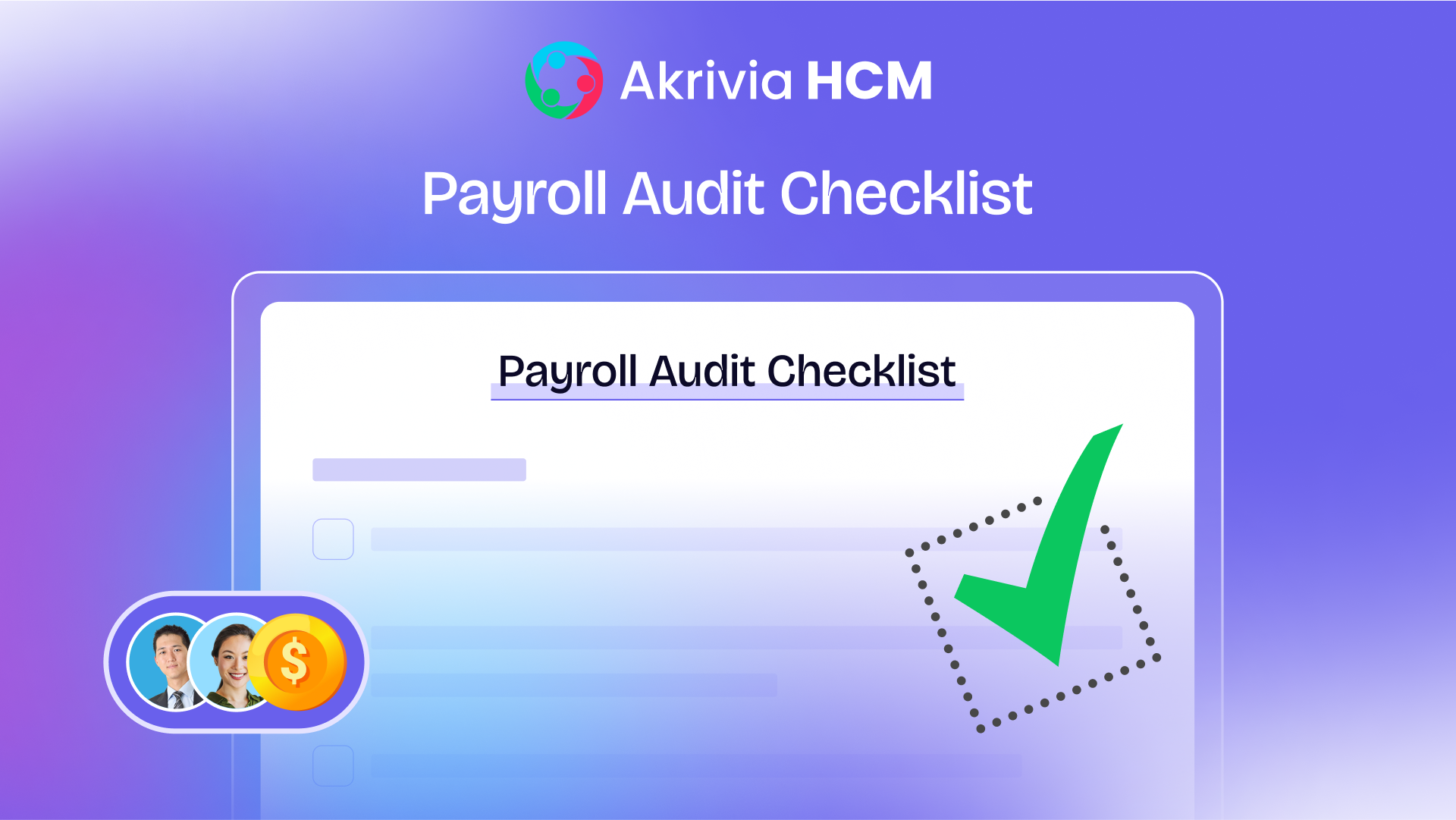Introduction
In the realm of payroll, the scope for mistake is in plenty. From inaccuracy in the employee records or incorrect tracking of overtime hours to missing remittance deadline. To rectify these issues before it leads to serious challenges, payroll audit works as one of the best tools.
In a global payroll survey by ADP, they found out 29% of the employers have said that mistakes were found only when they conducted a payroll audit. By not having a clear process to manage compliance, organisations not only risk facing regulatory penalties but also harm their reputation and employer brand.
Further, 2022 HR Processing Risk and Cost Survey by EY found out that the average cost per error, when weighted by error frequency, is $291 and a payroll audit on-time can help in mitigating this loss.
This article will guide through a comprehensive payroll audit checklist, helping in preparation of productive internal and external audits. Before diving into details, let’s get a clear idea of payroll audit.
What is Payroll Audit?
A payroll audit is a systematic review of an organisation’s payroll processes, records, and systems to ensure accuracy and compliance. This process involves verifying that employees are paid correctly, payroll taxes are properly calculated and remitted, and that the organisation is not failing to obey relevant laws and regulations. By conducting regular payroll audits, businesses not only identify discrepancies but also may prevent fraud to maintain the integrity of their business.
Why is Payroll Audit Important?
Prevention is better than cure. Therefore, even though payroll audit is not a mandatory element, it is important to prevent any serious circumstance and is useful because:
- It confirms that employees receive the accurate salaries and wages. It further ensures, that all the deductions are withheld properly.
- It reduces the risk of penalties and legal issues by verifying if the company is compliant with the local as well as the country’s labour laws and tax regulations.
- It helps to avoid any errors happening in the past payrolls to take timely corrective actions and strengthen internal controls.
- It can help to detect payroll frauds such as unauthorised pay rate changes or ghost employees or abnormality in transactions.
- It also contributes to accurate financial reporting, which is essential for effective financial planning and budgeting. By ensuring payroll expenses are correctly recorded, organisations can make informed decisions, optimize resource allocation, and maintain financial stability.
3.Understanding Payroll Audit Types
There are 2 types of payroll audits:
a) Internal Audits
Internal audits are executed by an organisation’s themselves as part of regular review process. These audits play a crucial role in ongoing monitoring and continuous improvement of payroll processes. These are proactive assessment to identify and address the gaps or issues on time. It will allow the management to take corrective measures without leading the situation to escalate.
b) External Audits
External audits are executed by third-party auditors who provide an objective assessment of an organisation’s financial records. From payroll standpoint, external auditors independently evaluate payroll records, internal controls, and compliance with tax and labour laws to identify any errors. External audits are often conducted to provide stakeholders with the unbiased financial reporting of the company and as mandated by the regulators.
Preparing for the Audit
a) Establish an Audit Timeline
Setting up a clear timeline and plan is the first and fundamental step for audit preparation. It helps ensure that all necessary tasks are completed in an organised manner. By allocating timeline, companies can keep the audit on track without any delay.
b) Assign Responsibilities
Designating specific team members for various audit tasks ensures accountability and efficiency. Each team member should clearly understand their roles and responsibilities, which helps streamline the audit process and ensures that all aspects of the audit are covered.
c) Develop an Audit Plan
With a clearly defined timeline and designated responsibilities in place, the next step is to develop a robust audit plan that outlines precise testing and validation procedures.
Sampling payroll transactions will go a long way to identify errors and ensure accuracy. Here are a few sample tests that are proven to be helpful:
- Select a representative sample of payroll transactions from different periods and departments,
- Examine the selected transactions for accuracy in pay rates, hours worked, and deductions.
Leveraging technology, particularly Robotic Process Automation (RPA), further enhances this process by automating data extraction, comparison, and anomaly detection. Such automation not only minimizes manual intervention and errors but also speed up the overall audit process.
Payroll Audit Framework
a) Document & Data Collection
Collecting comprehensive documents and a set of information is essential for payroll audits.
The documents to be gathered for a successful audit is listed below:
- Government-issued IDs
- Work authorization or visa documents for expatriates or foreign workers
- Employment contract
- Salary structure & payslips
- Time & attendance records to validate hours worked, overtime, leaves
- Bonus & incentive payment records
- Tax-saving declarations by employees
- Tax deduction records
- Payroll disbursement reports
- Work location of Employees (if applicable)
- Employee bank accounts
b) Reviewing Payroll Processes
Post collecting the required documents, check on the important aspects like:
- Have the employees been classified accurately?
- Have the terminated employees been omitted from the payroll?
- Are the salary calculations correct, or a paycheck got an extra zero?
The mistakes and miscalculations may exist in the process of the payroll and thus the task of reviewing it becomes vital.
Examine data entry methods to point out and rectify errors. If the data entry process is manual, then automated validation tools can come handy for conducting regular checks.
Some common areas to recheck have been jotted down below:
- Verify if all the relevant information on employee offer letters matches the data in the system.
- Properly classify the workers such as independent contractors or employees. For employees, track down the classification further, whether they are full-time, part-time or freelance workers.
- Review that every paid individual is an active employee, and no ghost employee exist in the system data.
- Count of overtime work and the payable amount according to the laws.
- Ensure that the higher rate for overtime on weekends or public holidays has been awarded as per the law.
- Check whether all the employees are in the correct tax bracket and if promoted employees are eligible for a new tax bracket.
c) Review of Regulatory Compliance
To ensure regulatory compliance, it is required that all statutory deductions are accurately calculated and remitted, minimum wage and overtime regulations are adhered to, accurate records are maintained, and regulatory changes are kept up with.
The deduction may change due to employee details, status or updates in the regulations. As discussed before, such deductions can vary significantly between employees working in a different state or country or for employees getting transferred or rehired. Therefore, maintaining accuracy in different types of deductions is vital for compliance. Below are a few key points to check:
- Ensure the withholding taxes are calculated correctly and the filing of tax reports are done on time.
- Validate calculation of mandatory social security contributions and their timely remittance.
- Ensure adherence to minimum wage requirements.
- Verify that the maximum overtime hours are not being crossed, and the employees are rightly compensated for their extra working hours.
- Check whether the employees are receiving all the applicable statutory benefits.
This is one of the most critical part of any review be it internal or external. As based on these calculations the remittances are made to the relevant authorities. Therefore, Company must review and rectify any discrepancies to avoid penalties.
Make certain that all employee benefits enrolments are documented and updated. In addition to that, reviewing the administration of benefits to confirm that contributions and deductions are correctly processed.
d) Review Other deductions
Non-regulatory compliance covers all payroll elements that go beyond statutory mandates and are driven by internal policies and employee preferences. It ensures that voluntary benefits and discretionary payroll components are administered accurately and in line with company guidelines. Key points to verify include:
- Confirm that voluntary deductions for health insurance, retirement contributions, and other employee-elected benefits are accurately calculated and timely processed.
- Ensure that reimbursements and expense claims are processed per internal policies and supported by appropriate documentation.
- Verify that bonus structures, incentive plans, and performance-based pay align with the company’s internal criteria and are disbursed correctly.
- Check that any employer contributions towards voluntary benefit programs such as wellness or mental health programs are recorded and processed as per policy.
e) Cross-Verification of Payroll Data
From payroll register to figures in bank remittance report to the general ledger, it’s important to ensure that all payroll transactions are accurately recorded and reconcile with each other.
Double-check all payroll-related documentation such as direct deposit change requests to confirm consistency and avoid any repercussions. It will help uncover any payment mistakes in salary amounts, detect ghost employees, and ensure that terminated employees are not mistakenly receiving payments. To perform this review, opt for the following key pointers:
- Verify that the details of payroll registers match the amounts recorded in the general ledger.
- Compare payroll-related bank transactions with payroll records to confirm all payments are verified.
- Ensure that employee’s pay reflect recent changes, such as raises or adjustments.
f) Security and Access Controls
Ensuring data security is a major challenge amidst the growing concerns over data breaches. A few key security measures include:
- Adhere to the data privacy and data protection regulations for all countries respectively especially GDPR requirements.
- Implementation of encryption protocols to protect payroll data during transmission and storage.
- Use two-factor authentication for accessing files and payroll systems.
- Reviewing access control policies ensures that only authorised personnel have access to payroll data. Companies can also choose to have a single master account to ensure the data does not get scattered.
- Assign access permissions based on job roles to limit access to sensitive data.
- Conduct occasional reviews of access permissions to ensure they reflect current job responsibilities.
Final Review & Reporting
In the final stage of the payroll audit, all the errors, discrepancies and compliance issues need to be compiled into a report.
This report will not only uphold all the loopholes, but it will also highlight the strengthened areas of the company’s payroll process as well as area that can be improved for better efficiency.
Once all the points are on focus, the next step is to develop an actionable plan with the in-house experts. If necessary, professional consultants should be engaged to provide additional insights and support.
Address each concern, outlining specific steps to rectify errors and overall improvement. Responsibilities should be assigned to the team with fixed metrics to keep the progress on check. The follow-up meetings to observe the implementation of the action plan is a necessary device to ultimately complete the all the operational steps.
Recap of the Checklist
Here is a detailed list that captures all the discussed points. This concise checklist will help ensure all key considerations are addressed:
✅ Establish an audit timeline and plan
✅ Assign responsibilities to team members
✅ Develop a robust audit plan with precise testing and validation procedures
✅ Collect comprehensive documents and information for payroll audits
✅ Confirm correct employee classifications
✅ Validate all the bank accounts are held by active employees
✅ Affirm payroll data matches with the information given to employees
✅Ensure compliance with local minimum wage and standard hour laws
✅ Cross-check recorded work hours with timesheets
✅ Reassess overtime pay, bonuses, commissions, reimbursements, and piece-rate details
✅ Review withholding tax calculations and remittance to be accurate
✅ Confirm social security contributions to be accurate
✅ Review processing of voluntary deductions
✅ Cross-verify payroll data from registers, bank remittance reports, and general ledger
✅ Maintain records as required by law
✅ Stay informed about updated laws and regulations
✅ Prepare audit report with findings and recommendations
Conclusion
As the audit of the payroll comes to an end, the company must reflect on the lessons learned and consider how to enhance payroll processes moving forward. Once the audit concludes, the company will get a clear picture of its strengths and weak areas. The companies should take help of automation to minimise the inaccuracies and errors. With the increased complexities of payroll, the popularity of such tools is also growing. Avoid financial penalties and interest by working on the areas of improvement, on order of priority, with regular checks, timelines and budgets to reap greatest results.






